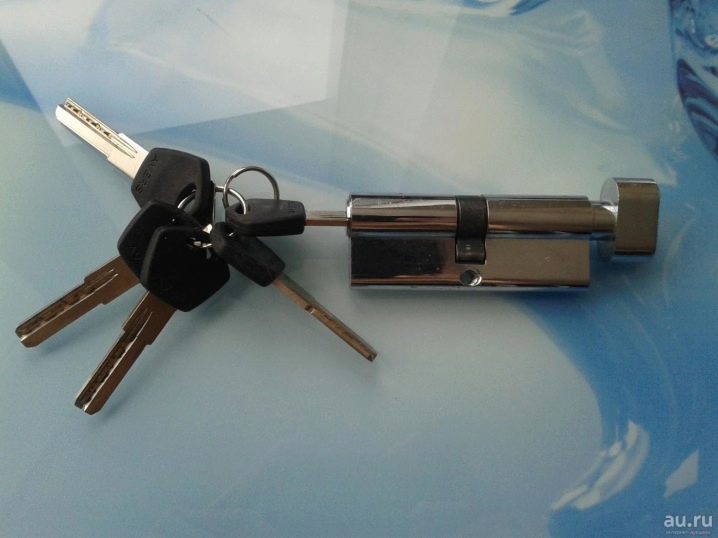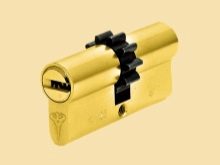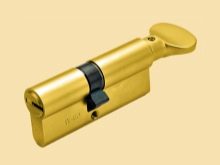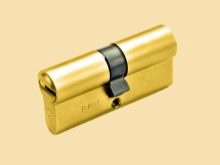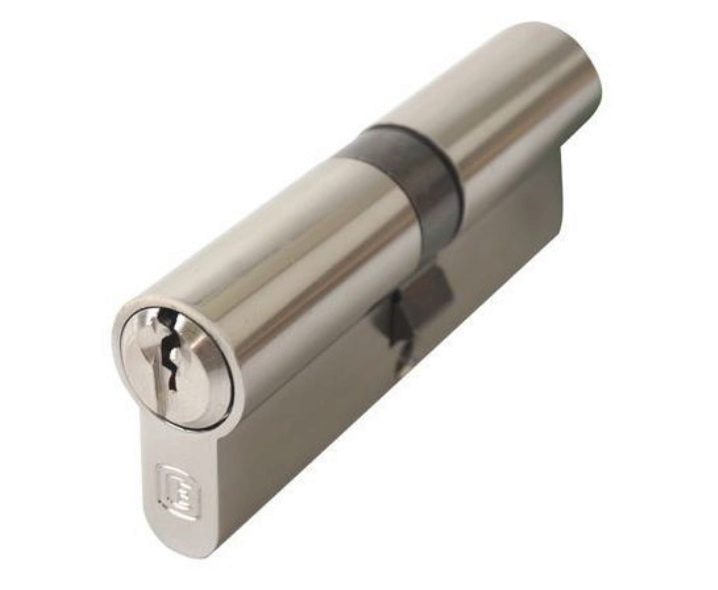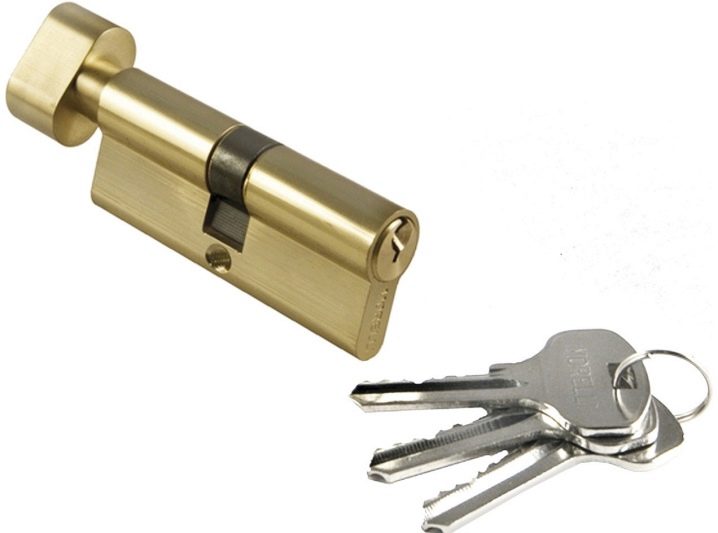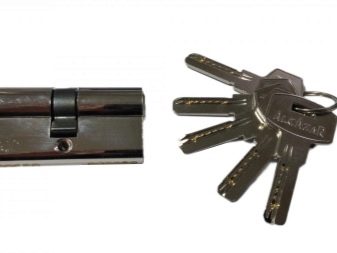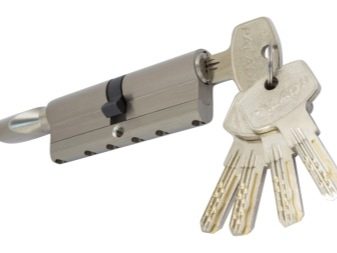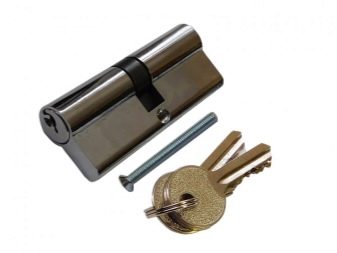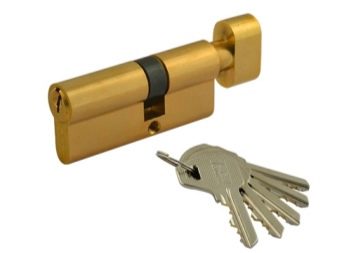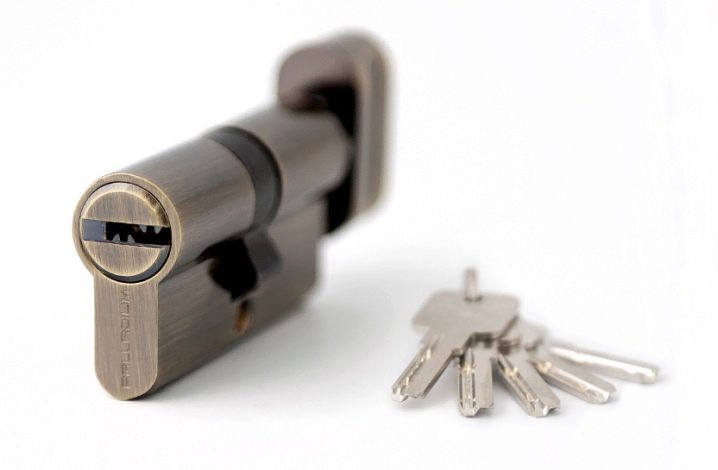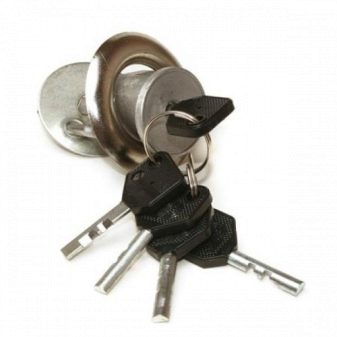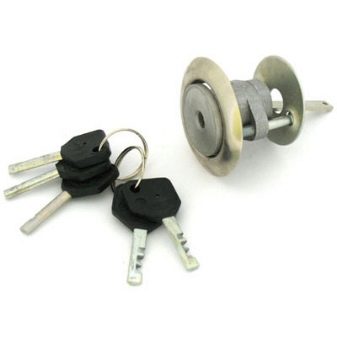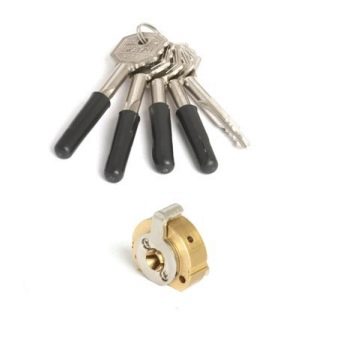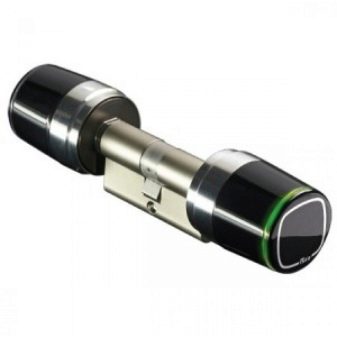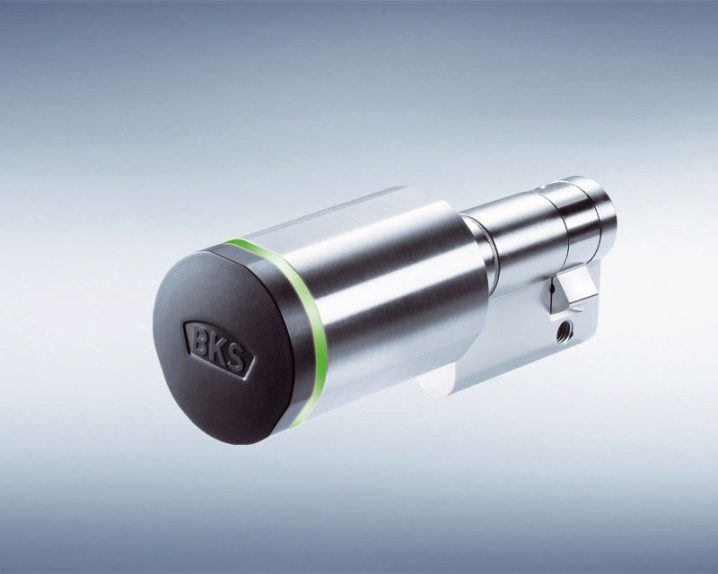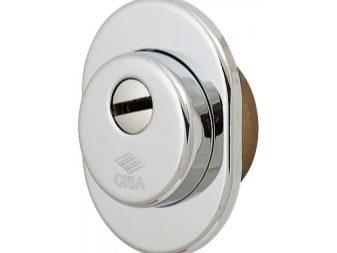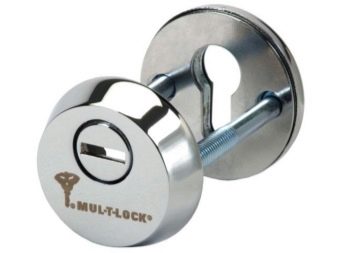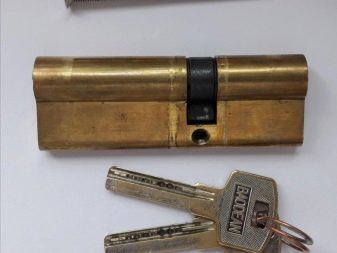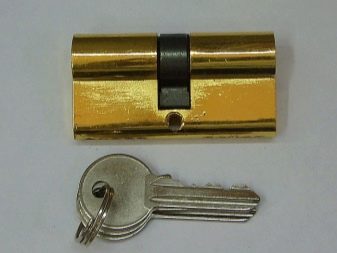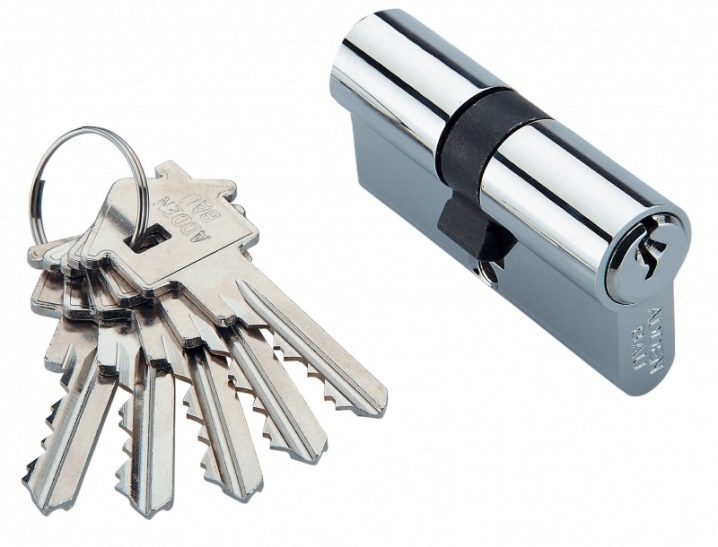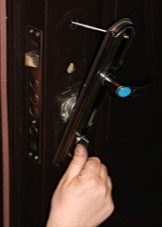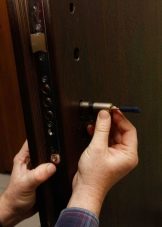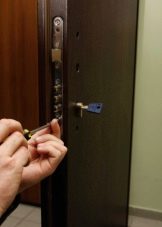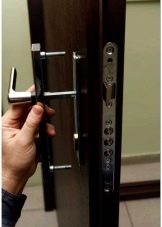Larvae for the lock: types, device, selection and installation
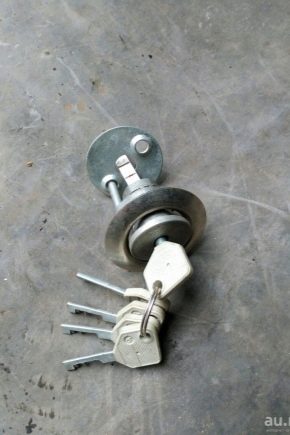
Hearing the name, you can not immediately understand what it is. The larva of the door lock is the core of the entire locking mechanism. Technically, it is correctly called the cylinder mechanism of secrecy or CMS. In a simple way, this is a removable keyhole module. This design at times facilitates the repair of locks, and if necessary, change the key does not have to change it entirely. Pretty easy to replace the bot. In this case, locking mechanisms of this type have a great advantage over suvaldnye or any other structures that do not provide for a removable keyhole. Replacement and repair can be carried out independently, costing only one screwdriver.
What it is?
The device of a larva of the door lock is quite simple. Simply put, it is a cylinder with a swivel tongue in the center, which is driven by a key, unlocking and locking the deadbolt. It is located inside the door leaf in a special through hole and is fixed, as a rule, with one bolt from the front part of the door in the place where the lock comes into contact with the strike plate. Such mechanisms are mainly applied at the entrance doors in apartments and private houses. Mostly the larvae are found in mortise types of locks, much less often according to this scheme applied overhead mechanisms. Depending on the type of locks, the larvae have varying degrees of resistance to cracking. It also depends on the complexity of the internal structure of the cylinder itself, the quality of materials and the type of keys.
Types and sizes
Larvae door locks have several types of designs. The simplest and at the same time the most popular is a cylinder with two keyholes located on opposite ends of the larva, the so-called key-key. The lock can be locked to open from the outside by simply inserting the key from the inside to the end.This feature can also be a minus. Models of this type of cores are quite convenient in continuous use. They are deprived of one of the main drawbacks of the overhead locks and the larvae with a turntable, which allow the robber who has entered the house through the window to easily leave it through the front door simply by turning the latch.
Despite such a rather significant minus cores with a turntable are very popular. They are aimed at ease of use, and also when using such mechanisms, the key wear period increases. The core with the turntable will not be able to block from the inside as in the previous case, which can be a plus and a minus at the same time. Their cost can often be slightly higher than for key-cylinder type cylinders.
The so-called semi-cylinder or one-sided larva, the core of which is installed mainly in utility rooms where there is no need to open and close the door from the inside. Thus, the keyhole is only on one side of the door. These cylinders were invented for reasons of economy. This is especially beneficial when installing locks on large sites such as hospitals, schools or offices.
These examples are called European standard cylinders. They are easy to distinguish from others in form, it resembles an inverted light bulb. As a rule, such cores are completed with keys of two types - so-called English keys or perforated ones. The English key (or as it is also called the flat toothed) in appearance resembles a small saw. The hole of the keyhole is located vertically. Such keys are completed with a considerable part of the locks on the market. Unfortunately, they have a low level of secrecy, with only 1000-2000 combinations. A hacker with a master key will cope with such a lock in a few minutes without noise and dust.
Perforated or profile keys have a flat square shape with a large number of notches and craters throughout the area. The key is horizontal. Such locks have a very high level of secrecy, the number of combinations can amount to several million. Trying to open such a lock with a master key, it is possible to unsuccessfully spend about an hour with him.
The breaking resistance is also affected by the material from which the larva is made. As a rule, they are made of brass and aluminum.Brass enclosures are included in the middle price segment, and are also used in the manufacture of expensive cores. The material is characterized by its strength, is not subject to corrosion. Mechanisms of brass generally have a high level of secrecy. The properties of the alloy allow you to make a more complex mechanism that does not collapse during operation. Some models have protection against drilling by adding hard alloys.
Aluminum cores are cheap. Complex mechanisms from it, as a rule, do not. Therefore, they have low secrecy, they can be easily cracked with a master key, and it is easy to drill out. Such larvae are subject to rapid wear. Installation of aluminum cores is recommended only for interior doors or in utility rooms, they are not suitable for heavy entrance doors.
In addition to the European standard larvae, the market can offer other, less popular options. The disk cores have a round shape and are unlocked with a semicircular key with transverse cuts. This type of larvae has long been obsolete and was once considered reliable.At the moment they are available in free sale and stand out only a low price. By this principle, padlocks are often arranged.
There are so-called cruciate larvae. Based on the name, they open the cross-shaped key. It can be both English and perforated. Such locks are distinguished by a high level of secrecy, but they cope poorly with their task. The lock can be opened with a normal screwdriver, making some effort. In addition, cruciform cores are difficult to replace and in some cases failures require replacing the entire lock, which contradicts the very idea of using a removable cylinder.
Manufacturers also offer a large selection of electronic cores. Such cylinders are designed for a standard fit in a mortise lock. They allow you to make an electromechanical from a conventional mechanical lock. The installation of the larvae is exactly the same as in the case of the European heart. The principle of operation is quite simple, namely:
- the mechanism has two handles on both sides of the core;
- the inner handle is connected to the mechanism of the cylinder like a spinner, while the outer handle rotates freely, without affecting the mechanism;
- as soon as an electronic key or keychain is applied to the handle, a bunch of external handle and lock occurs;
- it only remains to turn the knob a few turns and open the door;
- to close the door from the outside, you must do the same in the reverse order.
Important! In such systems, ease of use is most appealing. High reliability, they do not differ.
To make the lock more reliable will help a special pad on the larva of the castle. They are also called armored bedding. Such protection is in many locks by default. It closes most of the cylinder, having a small rotating slot that allows you to insert the key into the keyhole and turn it. This greatly increases the reliability of the lock, protecting it from mechanical influences.
Larvae door locks have several sizes. The most common cores are 60.70 and 80 millimeters. But the whole range of sizes varies from 54 to 130 mm. This parameter is taken into account when choosing a bot.
How to choose?
To choose a bot correctly, you first need to know its size. They may differ depending on the width of the door leaf.And also the larvae are divided into equilateral and versatile. For equilateral cylinders, the distances from the edge to the fastener hole on the right and left are equal. In the versatile one side is longer. They can also be called symmetrical and asymmetrical. It does not always work out to perfectly match the length of the core to the thickness of the door leaf. The larva should not bulge on the outside more than 3 mm.
As a rule, the larvae of the same type are universal. The core from other manufacturers without problems is suitable for your lock. To determine the type of core that fits your lock, as well as its size and aspect ratio, it is best to disassemble the lock and get the faulty core by selecting a new one based on its parameters. When choosing a larva, you should pay attention to the manufacturer. Focusing on the ratings of quality and reputation of a company that produces locks, you can choose a favorite in the ratio of price - quality. It is not recommended to take absolutely cheap cores, which is fraught with your own safety.
The best choice for the front door would be a brass key-type core with a perforated key of the average price category.Such a choice will provide you with more reliable protection and comfort in use. For interior or plastic doors are perfect aluminum core with the English key. Do not take the cheapest.
Most larvae are designed for mortise locks. Since the installation and maintenance of mechanisms of this type is a very difficult task, removable cores are designed to facilitate this process. With patch locks, everything is much simpler, in most cases they are not equipped with removable cores, with rare exceptions. Their fasteners are made in a slightly different way, it is fixed on the inner side of the lock, to replace the core, it is often necessary to disassemble the pad lock. And also rarity are cores for magnetic locks.
How to install?
The advantage of removable larvae for door locks is the ease of replacement and installation. To understand this problem and establish the core yourself will not be any difficulty. As a rule, the installation of the larva is required in case of breakage or, if necessary, change the key, under such conditions it is possible to replace only the core. To do this, you must perform the following algorithm:
- remove the decorative covers from the mortise lock;
- then remove the larva itself to determine the type of mechanism, which is done by loosening the central bolt holding it;
- based on the parameters of the old core, you can easily choose a new one, based on the above;
- after purchasing a suitable cylinder, it remains only to insert it in place and fix it with a bolt.
How to choose a bot for the castle, you will learn from the video below.
